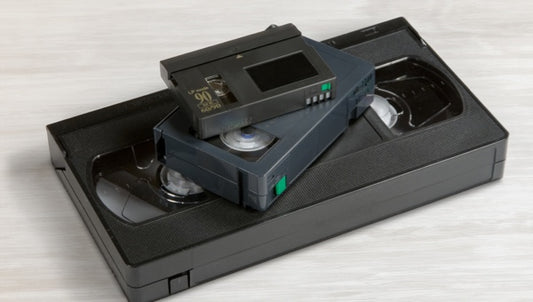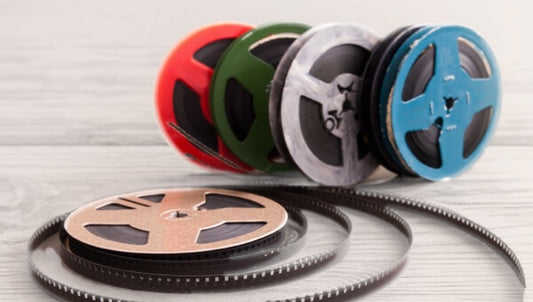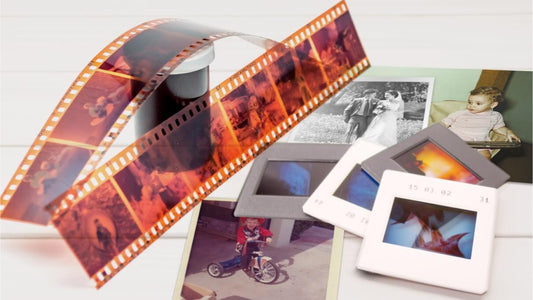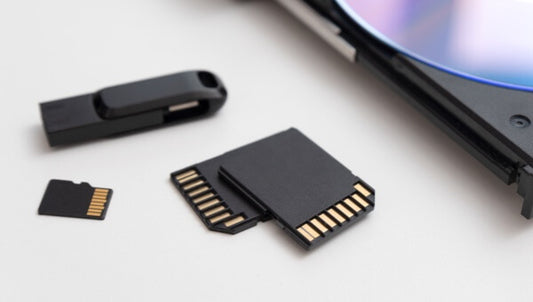Digitization and digitalization are two words often used interchangeably — but they mean very different things. At Capture, we help people move from analog to digital every day, and we know how important it is to understand the difference. In this guide, we’ll break down the confusion around digitization vs digitalization, share real examples, and explain why this distinction matters more than you might think.
Table of Contents
- What Is Digitization?
- What Is Digitalization?
- Key Differences Between Digitization and Digitalization
- How Digitization and Digitalization Work Together
- Why the Distinction Matters
- Real-World Applications
- How Understanding Digitization vs Digitalization Drives Real Change
What Is Digitization?
Digitization means converting physical information into a digital format. It does not change how the content functions — only how it is stored or accessed.
For example, when you scan a paper photo and save it as a digital file, that’s digitization. The photo remains the same; it just lives in a different format. This process allows for easier storage, sharing, and backup.
Capture offers services like VHS-C to digital to make preserving older videotapes simple.
We also help convert legacy formats with specialized services like Betamax to digital, ensuring that no memory is left behind.
Turn old memories into digital treasures. Digitization is the first step in keeping them safe for the next generation.
Bring Your Home Movies Back to Life
From VHS and Hi8 to camcorder tapes, Capture makes it easy to convert your old videos into lasting digital memories. Fast. Safe. Done right.
Convert Your Videos TodayWhat Is Digitalization?
Digitalization goes a step further. It means using digital technologies to improve or change how something is done. It transforms workflows, experiences, and even business models.
For instance, sending paper bills by mail is traditional. Switching to email billing and online payments is digitalization. It’s not just scanning the bill — it’s rethinking the process entirely using digital tools.
If you digitize 16mm film and then edit, share, and upload it to cloud storage, that’s digitalization at work. You’ve gone beyond format — you’ve enhanced how you use the content.
Key Differences Between Digitization and Digitalization
So what’s the real difference between the two? It’s simple: digitization copies — digitalization transforms.
Here’s a quick side-by-side comparison to make it even clearer:
| Digitization | Digitalization |
|---|---|
| Copies physical content into digital form | Uses tech to improve how a task or system works |
| Preserves original content without changing use | Changes workflows or experiences |
| First step toward going digital | Unlocks full benefits of digital technology |
Now that you know the difference between digitization and digitalization, let’s look at why this matters so much in real-world situations.
How Digitization and Digitalization Work Together
In many real-world projects, digitization and digitalization are both essential steps — and they often happen together. Instead of being separate, they build on each other to create better results.
For example, when preserving old family movies, the first step is to digitize home movies by converting VHS-C, Betamax, or other analog formats into digital files. This preserves the original content, making it easier to store, access, and protect. That’s digitization.
Then, once the movies are digitized, you can edit clips, add background music, create highlight reels, or organize them into cloud albums for family members to watch from anywhere. This transforms how the memories are experienced and shared — and that’s digitalization.
The same process applies to photographs. First, you scan printed photos using a photo digitizing service, preserving every image in a safe digital format. After digitization, you can organize digital photo libraries, build online albums, or even create custom slideshow videos. These are examples of digitalization improving how memories are stored, shared, and enjoyed.
Digitization saves the content. Digitalization brings it to life in new, powerful ways. When you combine both, you get the best of preservation and innovation - protecting your history while making it easier to relive and share with future generations.
Why the Distinction Matters
Confusing digitization vs digitalization can lead to missed opportunities — especially when it comes to preserving personal memories. Digitization alone simply changes the format; it doesn’t enhance the experience. To truly unlock the full value of your memories, you need digitalization.
Families who digitize home movies or photo albums with Capture often discover new ways to enjoy their memories - creating custom highlight reels, cloud libraries, or personalized family videos. Digitization saves the past. Digitalization makes it part of your life again.
Whether you're protecting a lifetime of memories or organizing a massive photo archive, understanding the steps of digitization and digitalization can save time, money, and effort - and help you get the most out of every memory.
Real-World Applications
Here are some examples of how digitization and digitalization work hand-in-hand:
-
Family Videos:
Digitizing Hi8 tapes, VHS-C, or Betamax = digitization.
Editing clips, creating highlight reels, or uploading to cloud albums = digitalization. -
Photo Collections:
Scanning printed photos with a photo album scanning service = digitization.
Building organized digital albums, sharing private galleries, or making custom slideshows = digitalization. -
Old Film Formats:
Converting 16mm film into digital files = digitization.
Editing old footage with music, titles, and scene cuts = digitalization. -
Everyday Organization:
Scanning important paper documents = digitization.
Using apps to categorize, tag, and search them instantly = digitalization.
Wherever memories or information are involved, both digitization and digitalization play a role in preserving and enhancing what matters most.
How Understanding Digitization vs Digitalization Drives Real Change
The difference between digitization vs digitalization isn’t just academic — it shapes how businesses evolve. At Capture, we help customers begin with digitization and then explore what digitalization can make possible. Digitization is the first step. Digitalization is the big leap forward. Whether you are preserving family memories or improving how you manage important information, Capture makes it easy to start your digital journey with confidence. Understanding the journey from analog to digital helps you lead, adapt, and thrive in a tech-powered world.











